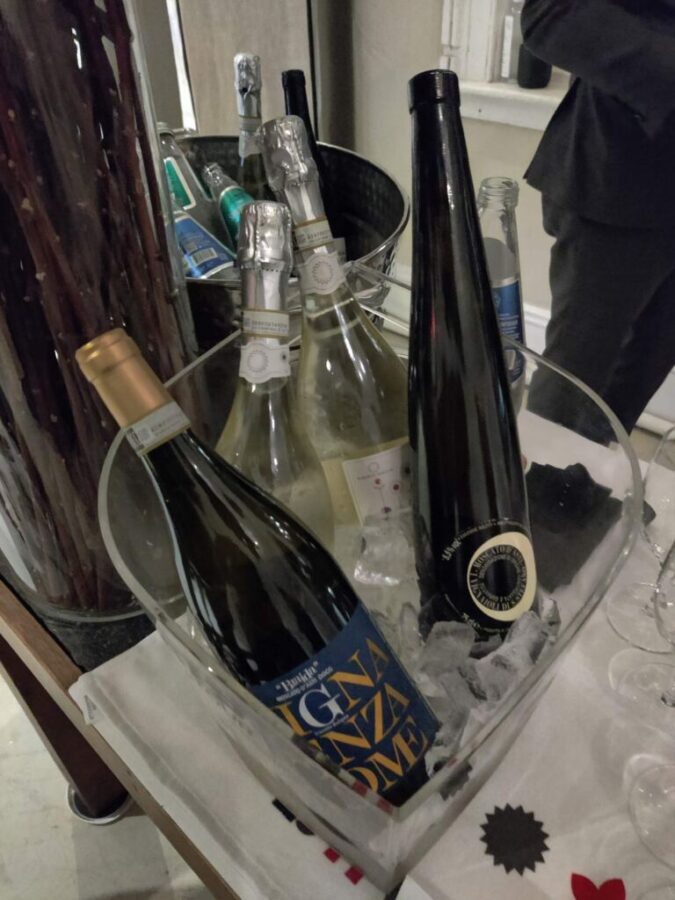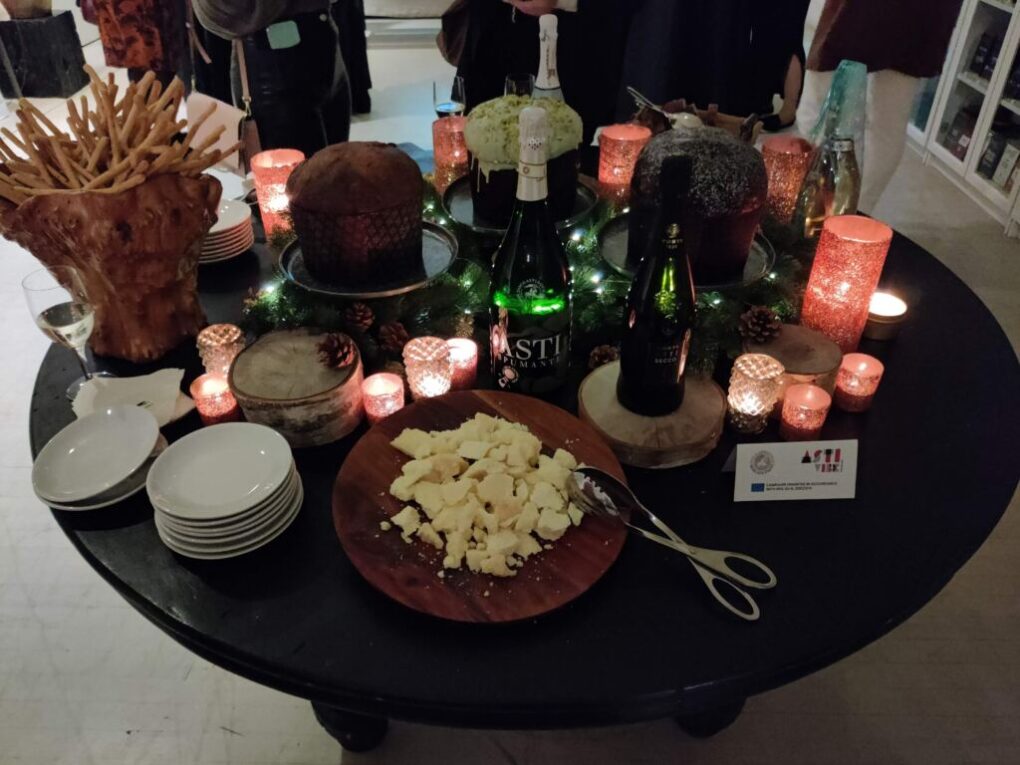
The winemaking territory of Asti, situated in the northwest Italian region of Piedmont, is recognized for its sweet, frizzante Moscato d’Asti wines, crafted from the Moscato Bianco grape.
The cultivation of Moscato grapes in Asti boasts ancient roots, with Moscato being the inaugural varietal planted for winemaking. During the 19th century, Moscato d’Asti emerged as a distinct wine, distinguished by its delicate effervescence and aromatic nuances, setting it apart from drier spumante and still wines.

Moscato d’Asti production involves fermenting partially fermented grape must, resulting in lower alcohol content. The process is halted before completion, preserving natural sugars and aromatic compounds, imparting the wine with its characteristic sweetness and aroma—notes of ripe peach, apricot, orange blossom, and hints of nuts and dried vegetation.
The Asti region also produces a sparkling wine known as Asti Spumante, or simply Asti. Asti Spumante is also crafted primarily from Moscato Bianco. Asti Spumante is processed using the Charmat method. This method, involving secondary fermentation in large, pressurized tanks, yields a slightly higher alcohol content and more pronounced effervescence than Moscato d’Asti. Asti wines are typically slightly sweeter and less effervescent.
Best enjoyed in their youth to savor their fresh and vibrant flavors, both Moscato d’Asti and Asti (sweet still wines) can also age, revealing an evolution from citrus and summer-fruit dominance to notes of sliced almonds, hazelnuts, balsamic, and petrol.
The Consorzio dell’ Asti (Consortium for the Protection of Asti DOCG) oversees the production of Moscato d’Asti and Asti wines, ensuring their authenticity.
Characterized by delicate effervescence and fruit-honey sweetness, Moscato d’Asti, and Moscato d’Asti Spumante pair seamlessly with a diverse array of dishes. Traditionally enjoyed as aperitifs or dessert wines, they find perfect companionship with fruit-based desserts and creamy pastries. When it comes to holiday pairings, virtually nothing goes together quite so well as Moscato d’Asti and Asti Spumante, and the classic Italian holiday treat Panettone.
A collaboration between producers of Moscato d’Asti and Asti Spumante, and Settepani Bakery and Restaurant celebrated this perfect holiday pairing that began in Italy and is now enjoyed worldwide, at the Sixth Floor Loft in Soho, New York City.
Settepani Bakery was founded in 1992 by Nino Settepani, an Italian American who grew up in Williamsburg, Brooklyn after immigrating with his parents to the United States from Sicily. Settepani Bakery offers traditional Italian baked goods, including Panettone in an array of flavors, ranging from pistachio to Nutella. In 2000, Nino’s wife Leah opened Settepani Restaurant, serving Italian-Mediterranean cuisine with Ethiopian accents, in Harlem. Settepani Bakery and Restaurant continues to be a family affair, with Leah and Nino working alongside their daughter Chef Bilena to create classic Italian baked goods and pastries, and innovative Italian-Mediterranean fare, to a loyal following of New Yorkers.

A selection of Asti Spumante was paired with traditional, pistachio, and chocolate Panettone baked by Chef Bilena of Settepani at the aperitivo hour. The duo was a perfect juxtaposition of complementary textures – the softness and silkiness of the gently fizzy Asti Spumante, with the airiness, fluffiness, and slight graininess of the Panettone, and harmonious flavors- white and yellow flowers, ripe and candied citrus and orchard fruit, honey, and nuts.

Be First to Comment